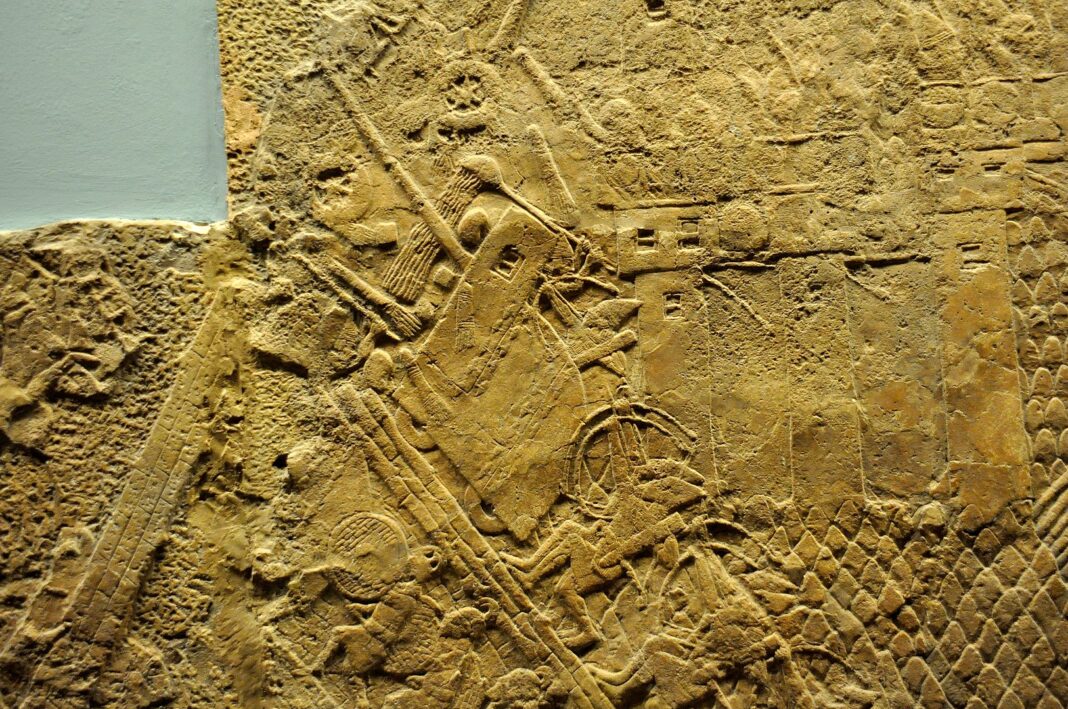The first mentions of the city of Lakhish date back to the 15th century BC, in Egyptian sources it appears no later than the 14th century BC. This ancient city, which the Bible also tells about, was taken and completely destroyed by the army of the Assyrian king Sinacherib in about 700 BC.
The grandson of the famous conqueror Tiglathpalasar III, Sinacherib, became king of Assyria in 705 BC. At that time, the kingdom of the Assyrians was one of the largest superpowers in the Middle East, controlling the territory from Iran to Egypt. They achieved this thanks to military technology that helped them win in the field or infiltrate any fortified city. One of the breakthrough technologies of that time, scientists consider a siege ramp (embankment) – a structure along which a ram was dragged to the walls of an enemy city.
It was such a ramp that archaeologists found in the last century at the ruins of Lachish – and it became the only surviving example of Assyrian military siege technologies. True, it is not entirely clear how they erected such a structure. Now an international team of scientists led by Professor Yosef Garfinkel of the Institute of Archeology of the Hebrew University of Jerusalem has reconstructed the construction of the siege ramp. As sources, they used biblical texts, stone reliefs depicting Assyrian battle scenes, supplemented by explanations in Akkadian, the results of archaeological excavations of the last century, and even photographs taken with the help of drones in the present century. The findings of the researchers are presented in the Oxford Journal of Archeology.
It must be said that at the beginning of the first millennium BC, Lachish was a prosperous Canaanite city, the second most important in the Kingdom of Judah. Although its population was not very large (about 3500 people), firstly, it was located at the intersection of trade routes, and secondly, it covered Jerusalem. Actually, for the second reason, the Assyrians destroyed it – it stood in the way of their army.
The city, as is often the case, was built on a hill. That is, the rams, which the Assyrians actively used in their conquests, had to somehow be dragged to the city walls, and this was prevented by the steepness of the hill slopes. There are several opinions on how the ramp builders solved their problem. It is known that for this they moved about 6000-9000 cubic meters of stones and soil with a total weight of about 13-19 thousand tons. The width of the ramp at the base was about 50–75 meters, and at the top, near the city wall, about 25 meters with a length of about 50–60 meters.
According to Professor Garfinkel and his colleagues, there is evidence that the ramp was made of small stones of the same size, about 6.5 kilograms each. The main problem faced by the Assyrian army was the supply of such stones: they required about three million. Where to get so much? Collecting natural stones from the fields around the construction site would be time consuming and would slow down the siege. The easiest way to get stones was in the immediate vicinity of the northern end of the ramp. “Lakhish does indeed have an exposed cliff of local rock in exactly the place where you would expect it,” archaeologists say.
Researchers suggest that construction began about 80 meters from the city walls. The stones could be transported along human chains – transferred from person to person by hand. Garfinkel calculated that with the parallel operation of four chains of people on the ramp, each of which worked around the clock, about 160 thousand stones would be moved every day. The fact is that time was running out for Sinacherib: the time allotted to him for that military campaign was coming to an end, and Jerusalem was ahead, which should not have been sieged, with Lachish behind his back with his, albeit small, garrison.
Of course, the population of the city did not look indifferently at the construction site at their walls. Most likely, the residents tried to fire at the workers – during the excavation of the ramp, archaeologists found bronze and bone arrowheads, as well as stone cannonballs. But Garfinkel believes the workers were protected by massive shields at the northern end of the ramp. Every day these shields were pushed several meters towards the city.
In about 25 days, a ramp shaped like a giant triangular wedge could reach the city walls. In the last stage, wooden beams were laid on top of the stones, on which siege engines and battering rams were placed. Judging by the stone bas-reliefs of Assyrian work, the defenders of the city fought desperately. But there were too few of them – no more than three or four hundred men and adolescents capable of fighting. The city fell and all the inhabitants died. The road to Jerusalem was clear. But there was no need to go to him.
The fall of Lachish and the fate of its inhabitants made such an impression on the Jewish ruler Hezekiah that he sent a messenger to Sinacherib asking for clemency. The Assyrian king heeded his pleas: for 30 talents of gold and 300 talents of silver. To pay tribute, the king of Judea emptied the treasury and even removed gold jewelry from the temples. And his actions are quite understandable, if we recall the custom of the Assyrians with particular cruelty to execute the inhabitants of the captured cities.
Photo: The takeover of Lachish. Detail of a bas-relief from Nineveh during the reign of Sinacherib. Now kept in the British Museum / © wikipedia.org









